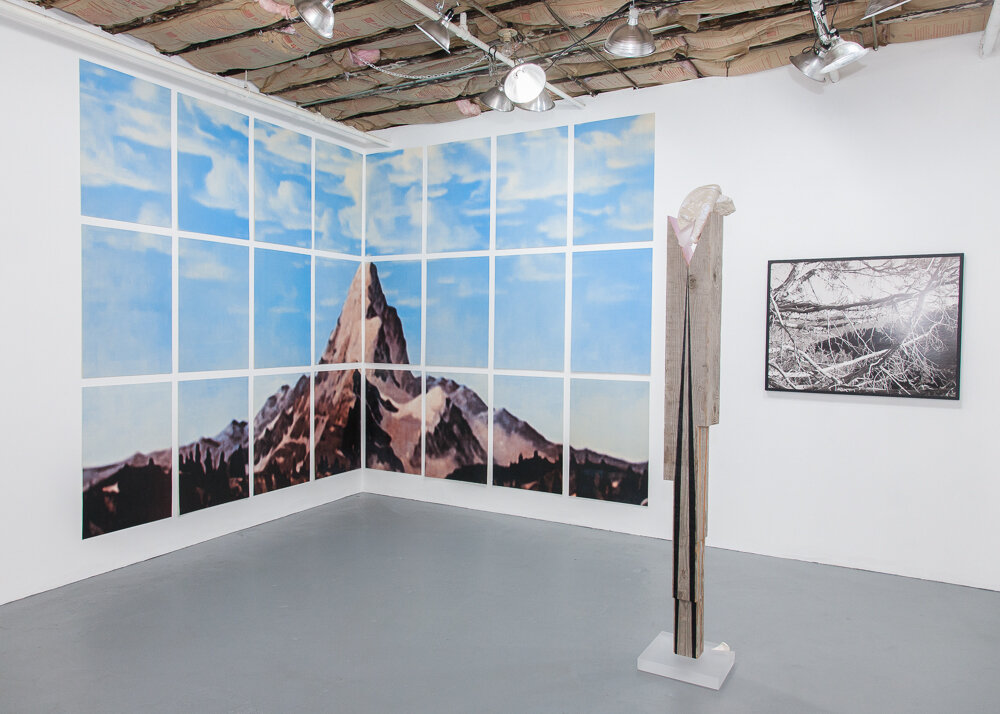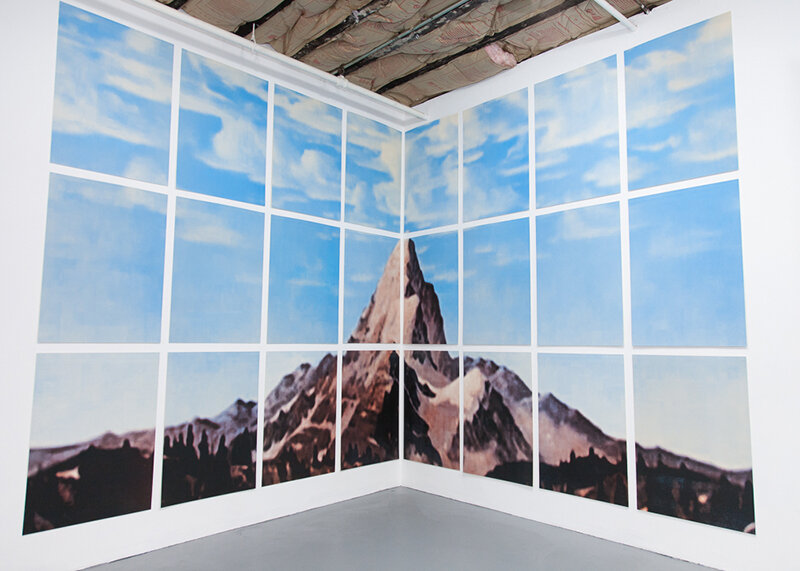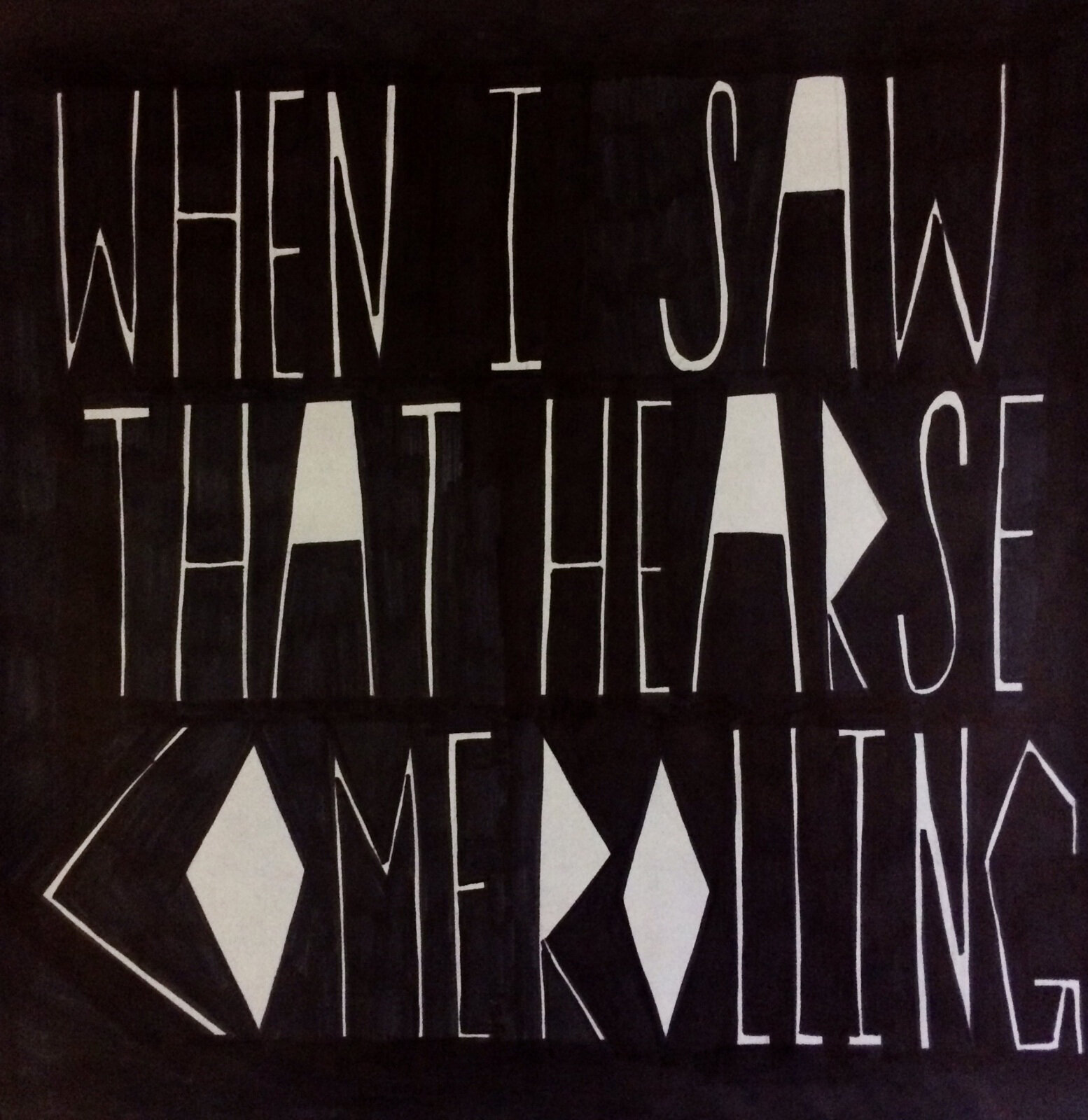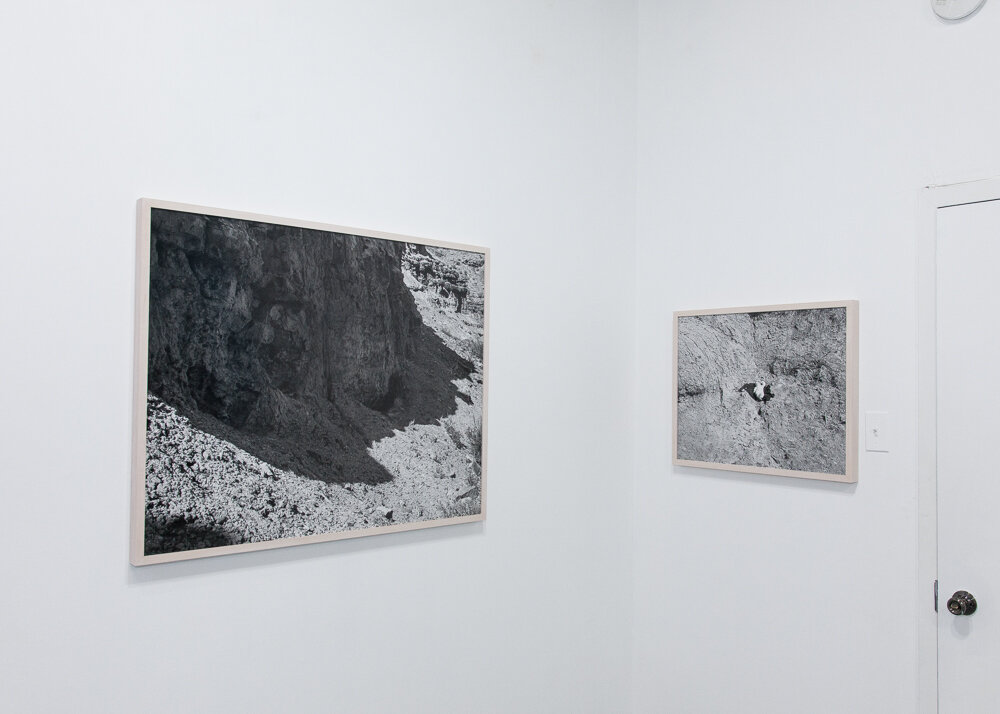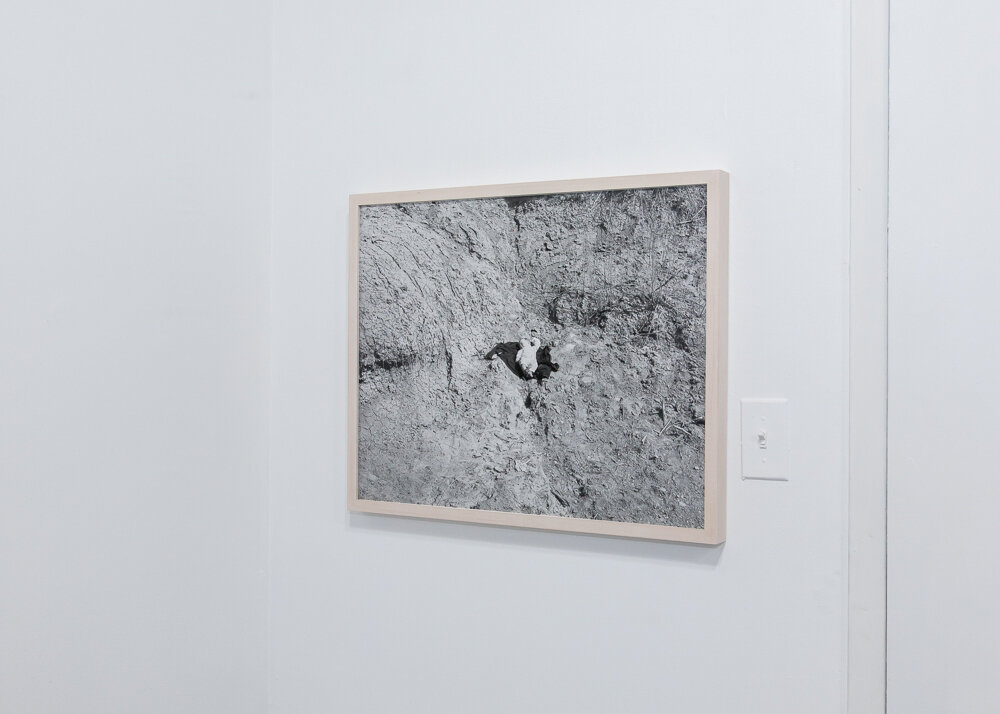curated by Harriet Salmon, Jason Tomme & Ana Wolovick
Press Release:
Black Ball Projects is pleased to announced MTN, a four person show revolving around a single idea: mountain. Literally and figuratively, the mountain is a place where we act out our mythologies. Either as a symbol or as an actual place, it often serves as that distant frontier and a stark contrast from the civilized lowlands. Our heroes run there to start anew, seeking glory or redemption while our villains may too reside there building strength in war-torn mountain caves. In that respect, the mountain can also be a place of suspicion and a site of unknown horrors. This invokes notions of the romantic and the sublime laid out by 18th century British and German philosophers (often drawing upon mountain filled nature), which is still an effective philosophical lens by which beauty, experience, and aspects of the known and the unknown can be viewed. The work in this show, a collection of photography, printmaking, drawing and sculpture, each use the mountain as a subject of play, creating unique viewpoints of how this mystique can be generated and/or subverted.
Adam Helms –
“Helms’ most recent landscape, The Dream of the Dream (2011) is a grid of 24 separate silkscreen prints on felt. Together they form a monumental landscape instantly recognizable as the Paramount Pictures logo that ran before the studio’s productions in the 1970s and 1980s. Just as Helms’ drawings of revolutionaries conflated individual portraits with emblems, here is a landscape that doubles as a corporate logo. It is the quintessential image of nature as an Edenic garden, with snow-topped peaks rising above crystalline mountain lakes. The climate appears temperate, the land looks rich and fertile, and, perhaps most importantly, it is devoid of any natives who might have staked prior claims. Yet this image of nature appeared before audiences at a time when Paramount’s catalogue of films depicted the frontier in quite different terms. Hard-boiled westerns like Once Upon a Time in the West (1968) and science-fiction movies like Phase IV(1974) pictured the American frontier as the site of brutal violence and existential struggle. The land was either property to be divided up for profit or a tenuous homeland to be protected at all costs against invaders.”
Excerpt from William S. Smith’s catalogue essay for Helms’ monograph “Adam Helms”
(DAP/Snoeck, 2013)
James Foster –
Above, the universe is a black egg with a heavy salt of old light. On land, distant peaks will always ring our
borders. Alien is always just over that jagged horizon. And belief in the existence of something truly and
totally other isn't enough to make it real. In fact all belief can do is lend itself to the fabrication of the subject's antithesis - the intrinsic. So we have that, at least, in the end.
This situation persists because we cannot apprehend the horizon and its far side simultaneously, and the horizon always retreats at the pace of our approach. We will forever remain the exact distance to alien from where we were at the moment we first became attracted to the notion, because it is an unobservable one, obscured behind the sliding mountains.
Discard the word alien, it is a figment. It is a fiction whose time never/always arrives, for when it does it is instantaneously folded into the known. It is a concept without reference, an infinite tower of trap-doors. The alien is leached of its un- qualities so fast that it becomes immediate family.
The alien sits outside the comparable.
The shadows of the mountain site our magical experiments, beautifully doomed attempts to transcend. And from the peaks we do manage to summit we will always only spy the next range, beyond which there be the alien.
Kristine Potter –
The photographs from this body of work, Manifest, are made in a remote area along Colorado’s western slope between the years of 2012–15. The pictures describe in part; an abstractly scaled landscape, the mountain men who are its inhabitants, the psychological tenor of living in near isolation, and the unyielding high-desert sun. I sought to question some of the more persistent tropes of our American Mythology; the rugged cowboy, the dominion of wilderness and the Mountain as a repository of our dreams and aspirations. There is no idealized, long view in this story of the west. The range is hard to see, the thickets are too thick, the cliff too ominous to pass. The providential march that led us here was not enough to tame the terrain. What’s left of those Biblical prospects can be found on the mesas and the valleys between. Naropa Sabine writes (in forthcoming book) “I never wanted to hurt nobody, just scratch something out of this place. This valley...eat some fruit, pull it fresh off the limb, just like Adam, the first man. We know what happened to him though. Does any good thing last?”
Tania Cross –
This series of drawings short text based drawings is an off-shoot I began work on several years ago. The text is taken from sentence fragments of short stories from The New Yorker, that evolved into a font of my design. I produce a monthly noise and experimental music showcase, the posters that promote these shows highlight this font and drawing style. For this exhibition, organized around the theme of “mountain” the drawings are a hybrid of these two, drawn in the same way using the same font, but framed and hung in an inverted triangle, the fragments fight to become one message, but they are disparate and remain separate. In some manner they stay connected to music and the sort of broader simplified symbolism of early folk melodies, ie: mountains songs, taken from american folk and spiritual songs. They are lyrics from songs we all have heard but don’t know where from or who sang them. They are all black drawings and the straightforward framing enhance the somberness of the selected words.

